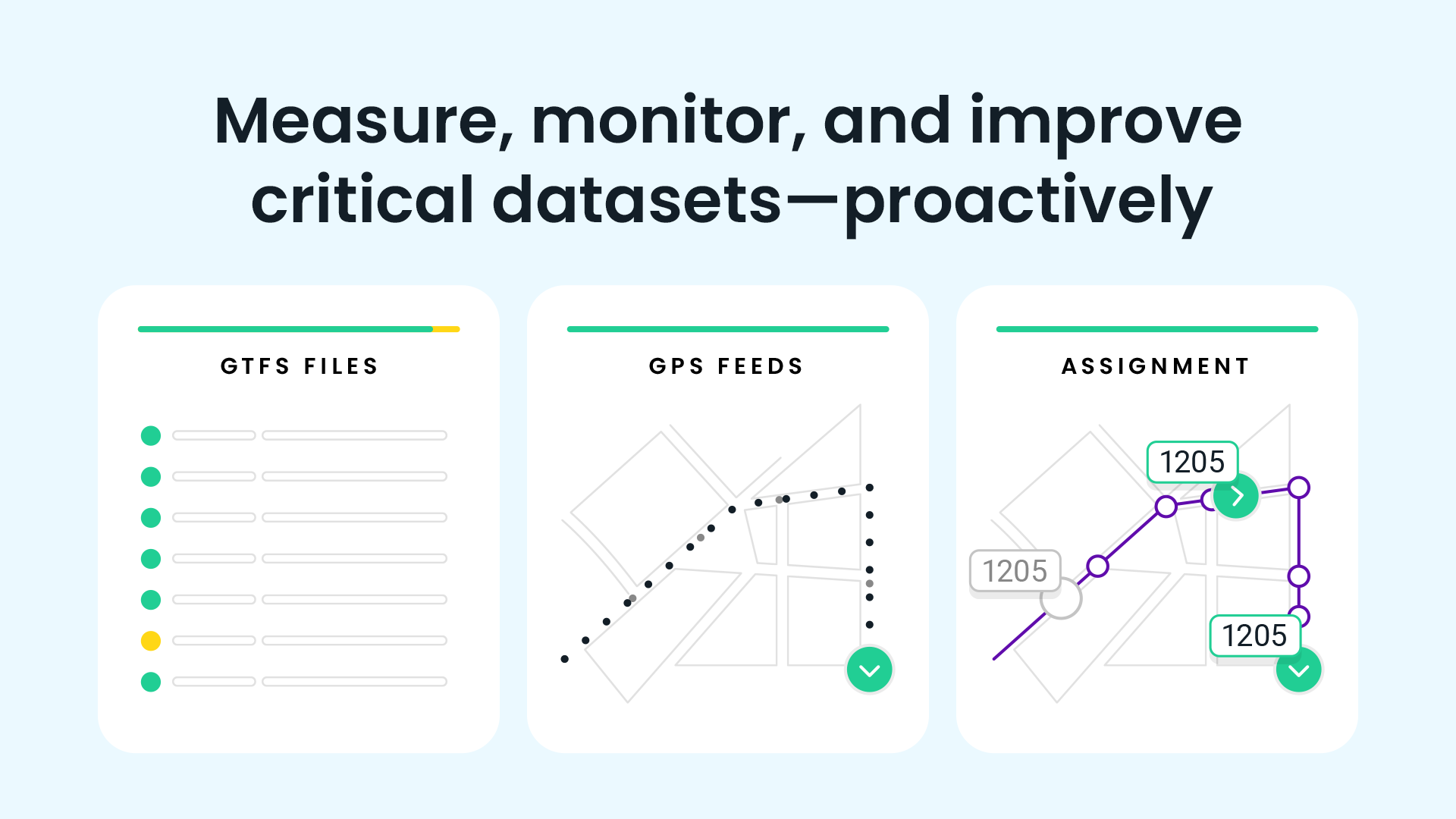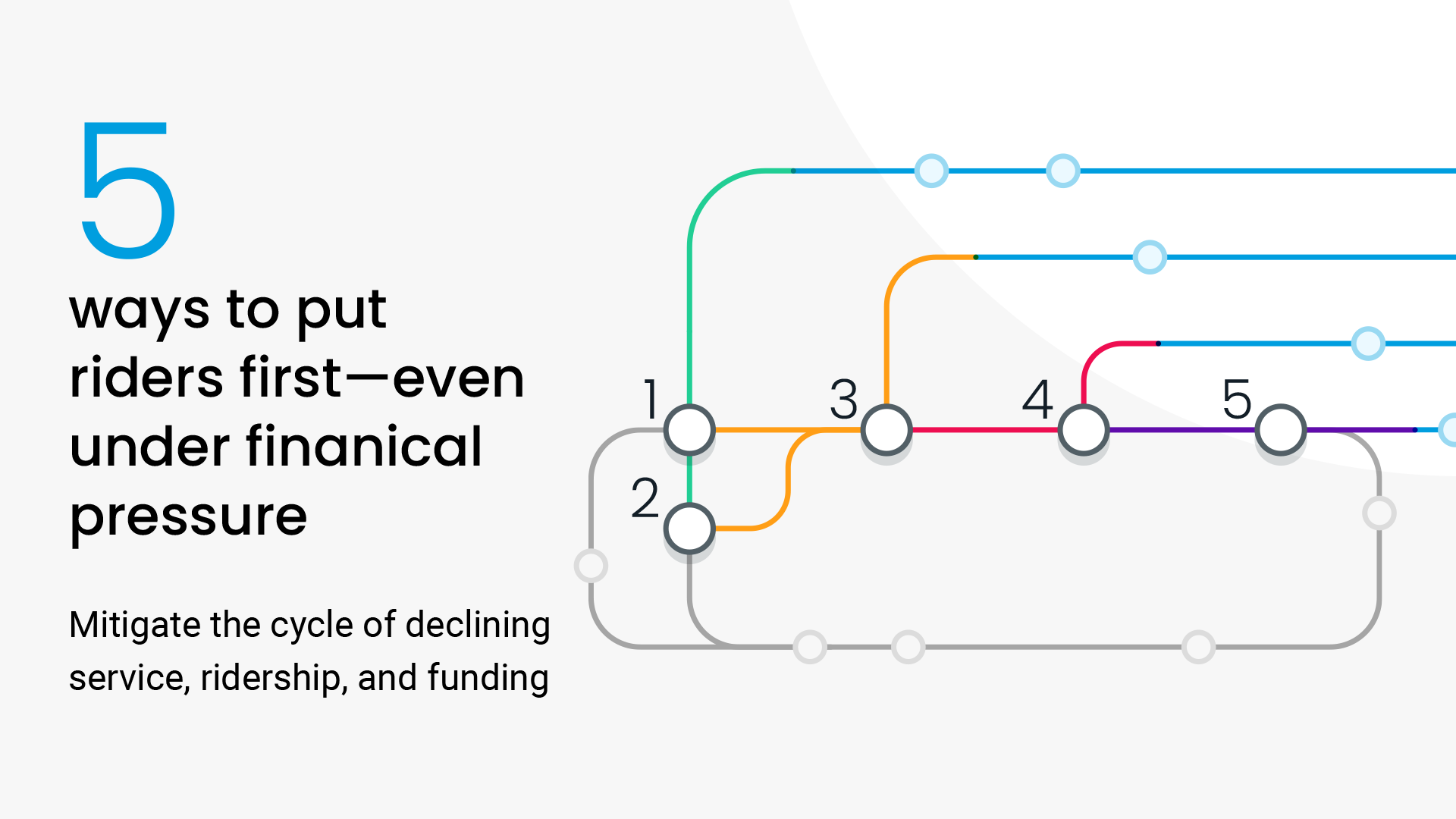
March 17, 2023
Smart transportation technology in 2023: A State of Public Transit Feature

March 17, 2023
Smart transportation technology in 2023: A State of Public Transit Feature
March 17, 2023
Smart transportation technology in 2023: A State of Public Transit Feature
Technology can either be a help or a hindrance to transit agency staff.
The most advanced smart transportation technology is enabling transit agencies to collect, analyze, and share data among staff and riders. But inflexible technology can result in inaccessible data and inefficient workflows.
With staffing shortages throughout agency ranks, heightened passenger expectations, and federal funds ready to be spent on new projects, agencies need the best tools at their disposal to do more with less. Yet too many transit professionals report outdated technology as a major obstacle to efficiently getting their work done.
In our State of Public Transit 2023 report, we surveyed transit professionals from more than 100 agencies and all departments, including operations, planning, scheduling, and customer service.
We found that many agency staff feel seriously limited by their existing technology. Read on for a snapshot of the survey data on how transit agencies are using technology today, and download the report for more insights.
Request a demo
What transit agency staff are saying
All too frequently, agency staff feel transit technology has been developed to satisfy procurement check boxes rather than to meet user needs. We asked transit staff what they would change about their current technology, and we found a number of recurring trends:
- Disparate data for different users
- Limited access to technology among staff
- Resource-intensive implementations
- Clunky user interfaces
- Proprietary software
On the last point, we received multiple written responses from transit staff bemoaning the challenges of transferring data from one system to another. For example, one respondent wrote their recommendation would be, “Make it all more cohesive, so various technologies can work together to deliver better experiences for riders and staff.”
This point echoes a sentiment from CalTrans’ Gillian Gilett in our recent webinar on the report findings: “We need to make sure products are legos. Stop thinking about custom integrations and start thinking about interoperability.” We’ll share later on how agencies today are pioneering new technology architectures based on the free flow of data across different systems.
How long does it take for agency staff to complete common tasks?
With widespread staffing shortages, transit agencies can’t afford to slow staff down with inefficient technology. But today staff in many different departments are spending unnecessary time on common tasks.

A majority of planners and schedulers reported spending more than an hour building a schedule for a route, with 29% spending more than three hours to do so. Building efficient schedules is a key tool for increasing on-time performance and providing the best possible service with existing resources.
Only 20% of respondents are able to analyze a route’s on-time performance in under ten minutes, with 28% taking over an hour to do so. Barriers to analyzing performance can make it difficult for agencies to understand problem areas within their networks and to evaluate the impacts of schedule changes or infrastructure projects. Certain federal infrastructure grants also require analyzing the performance impacts, which could be a challenge for agencies with time-consuming reporting processes.
Operations staff are similarly hamstrung when it comes to their day-to-day task. Scenarios such as extreme weather and special events result in agencies creating a high volume of detours. Agencies working with Swiftly made over 6,000 service adjustments (including cancellations) during a 10-day period this past holiday season! Yet only 13% of operations staff today can create a detour in under ten minutes. Agencies around the country have also struggled to keep up with service adjustments to reflect service cancellations stemming from operator shortages, resulting in passenger complaints of ghost buses.
Customer service teams also struggle to efficiently respond to customer complaints. 45% of respondents take over an hour to investigate a rider complaint, and only 6% are able to do so in under 10 minutes. This puts huge pressure on customer service teams, especially when these departments may already be dealing with staffing shortages.
The write-in response from a scheduler at a medium-sized urban agency summed up these technology challenges well: “Simple things take too long.”
Empowering staff with modern transit technology
Many of the usability challenges reported by transit professionals stem from legacy technology infrastructure. Modern, cloud-native transit technology can overcome these limitations. Five traits of cloud-native technology stand out for transit agencies:
- APIs
- “True” real-time passenger information
- Interoperable systems
- Modular deployments
- Continuous, over-the-air software updates
- Accessibility from any internet-connected device
To understand how to evaluate technology against these characteristics and for more quotes and insights on the usability of transit technology today, download the full State of Public Transit 2023 report.

The rich text element allows you to create and format headings, paragraphs, blockquotes, images, and video all in one place instead of having to add and format them individually. Just double-click and easily create content.
Last Name, Agency

What’s a Rich Text element?
What’s a Rich Text element?
What’s a Rich Text element?
What’s a Rich Text element?
What’s a Rich Text element?
The rich text element allows you to create and format headings, paragraphs, blockquotes, images, and video all in one place instead of having to add and format them individually. Just double-click and easily create content.
Last Name, Agency
Static and dynamic content editing
A rich text element can be used with static or dynamic content. For static content, just drop it into any page and begin editing. For dynamic content, add a rich text field to any collection and then connect a rich text element to that field in the settings panel. Voila!
How to customize formatting for each rich text
Headings, paragraphs, blockquotes, figures, images, and figure captions can all be styled after a class is added to the rich text element using the "When inside of" nested selector system.
- text goes here
- text goes here
- text goes here
- text goes here
- text goes here
- text goes here









